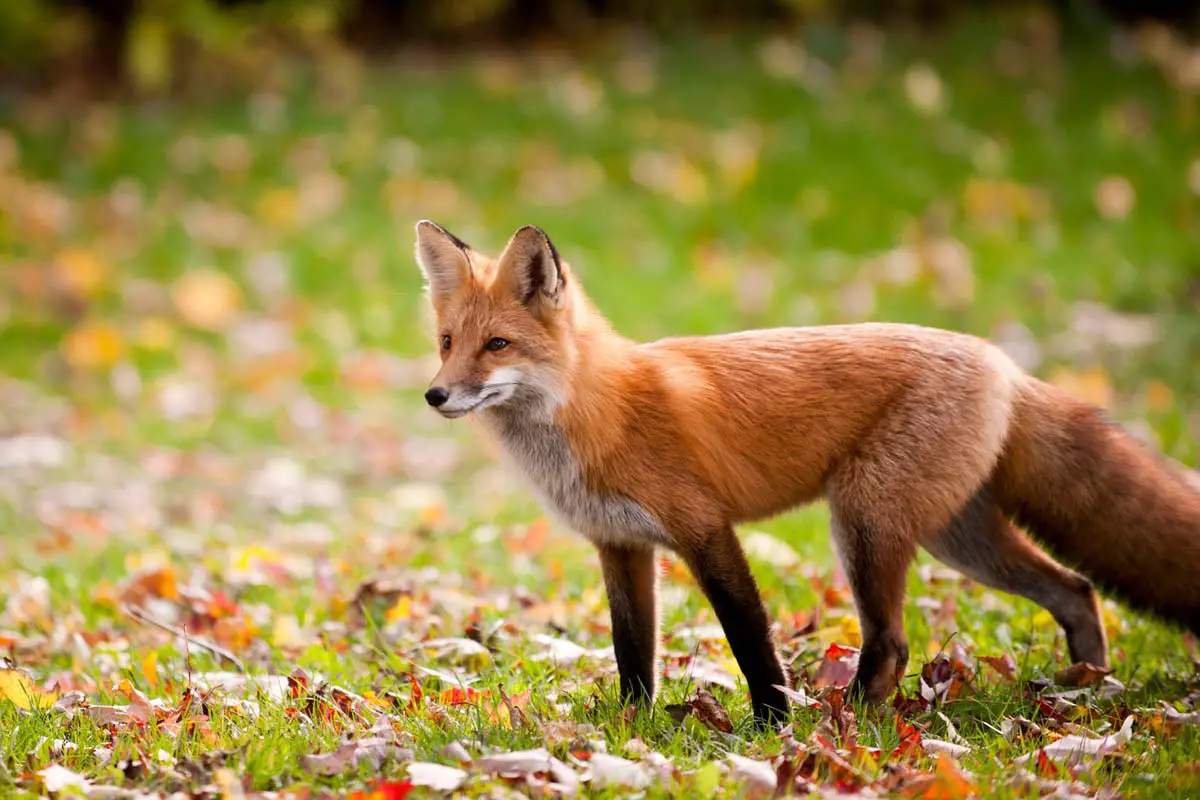Did you know some foxes change colors with the seasons? When certain foxes such as arctic foxes shed their fur they change colors! Other foxes are born with mutations that make their fur unique. Let’s take a look at the different colors of foxes and what makes them so unique.
Colors of foxes depend on the type of fox and the time of year. Some foxes change colors multiple times with the seasons. Desert foxes usually retain their tan colors but may change when they shed. There are foxes that are born or bred with mutations that give them unusal colors.
There are over 30 species of foxes, with many different colors of fur. Each species of foxes come in different colors and have multiple color morphs depending on the time of year and the particular mutation they are born with.
Watch Fox Colors Video
Subscribe to our Youtube Channel for weekly videos!
Red foxes and arctic foxes both change colors with the seasons and most foxes change colors as they molt with growth (from baby/kit to young adult. )
Shedding occurs just before the summer months, which helps them lose a little of their coat and guard hair in preparation for the heat.
Molting occurs when a fox goes through different growth cycles. Baby foxes also known as kits, are oftentimes born one color, then change color once they get a few months older.
Because there are so many different types of color morphs and hybrid colorations it can be hard to identify species.

Why Some Foxes Change Colors
Foxes change colors for a couple of reasons. Most red foxes and arctic foxes will change colors when they start to shed. They do this so that they will stay cooler in the warmer months. Their fur losing some of its defining colors and makes them appear to be darker or lighter than normal.
In the spring and summertime Arctic foxes are a darker color, usually a brown or gray color. They have adapted to match the colors of the earth around them. In the winter months, they turn white.
Red foxes will oftentimes change from red to gold depending on the time of year, they also do this as a seasonal adaptation.
Some foxes will change colors when they molt with different growth cycles. When they are young they are a brown or gray color, later they take on the color of their species.
What Are Mutations?
Mutations are color variations or morphs that occur in different species of foxes. Some of these mutations occur naturally in the wild, however, a lot of them are the product of breeding programs from fur farms.
Red foxes and arctic foxes have many color mutations. Some of the mutations are caused by the different regions that they live, while others are from breeding.
Red foxes can be a silver color or black color. These mutations are a result of melanistic color morphs and vary in coloring. All silver foxes have some black, and some black mutations have a little bit of silver but there are also completely black mutations.
Melanistic Morphs
Silver foxes and black foxes have melanistic color morphs. Melanin is a process that makes a fox’s natural fur color darker through a genetic mutation. It is the absence of light coloring, this is due to a dark-colored pigment called melanin that develops in the skin and hair.
This happens in some red foxes and arctic foxes when they change their coats for the seasons as well.
Some foxes are born naturally in the wild with these color mutations, others are bred specifically for them. Around 10% of wild red foxes have melanistic morphs.
Melanism occurs more in colder climates. Albinism is the opposite of Melanin.
Red Fox Colors
Red foxes have 3 main color morphs that occur.
- Red
- Silver/black
- Cross
The largest percentage of red foxes are the red/orange color morphs. There are many other red fox colors besides these three, however, they are mostly man-made.
Red Morph
The red/orange color that most red foxes have is their main color. It varies from light orange to a darker orange and red depending on the time of year and is the most common of the color morphs. Red foxes are the most common of all the foxes in the world and can be found in many regions.
The red fox can have a small amount of actual red color around the ears and eyes but most red foxes are orange. There are also a few rare red foxes that are almost completely red.
Silver and Black Morphs
Red foxes may have silver and black color morphs. Silver foxes vary in color having silver-like fur and black fur. Most silver foxes have black around their ears, noses, and legs. They have white tails just like most red foxes. The white/silver comes from clusters of guard hairs.
Silver and black foxes are the most melanistic. Black color morphs vary in color, with some brown colors. Completely black foxes are rare but have been seen or photographed.

Cross Fox Morph
The cross fox is a red fox that has some melanin. Cross foxes are the usual orange/red morph with a little bit of dark brown or black that runs in a line down the back from the tail to the head, with another line of dark color that crosses its shoulders from left to right down to their legs.
This is where the name cross fox comes from, the two dark color lines crossing. They are common in North America. The cross fox makes for 25% of color morphs in red foxes. Read more about cross foxes in our article here.

Other Red Fox Mutations
Fire and Ice Fox
The fire and ice fox is a beautiful fox with golden tones to their fur. They have light beige to a darker beige and red. The fire gene is due to minimal red and yellow melanin. Ther ears and feet are gray, from the pearl fox that they are bred with.
Their eyes can be amber, yellow, or green. Their noses are gray, red-gray, and black. These foxes have nice thick coats of fur and are sometimes sold as pets.
Champagne Fox
The champagne fox originated in Quebec in the 1970s. They are a pink color with golden hues. They have white-tipped tails like most red fox mutations. Their eyes are pale blue which is due to a calcium deficiency. Their eyes can also appear as a pale gray or green. They have pink noses.
They are also known as pink foxes or pink champagne foxes. These foxes are extremely beautiful.
Platinum Fox
Platinum foxes originated on a fur farm in the 1930’s. Their fur is a mixture of gray and white colors. They have white feet, a white underbelly, and some platinum foxes have a white ring around their necks. Their noses are black or black with a pink coloration. Their eyes range from brown, yellow, blue, as well as a bi-eyed orange color.
They are gorgeous foxes and are often crossed with hybrid foxes to make more color options.
Marble Fox
Marble foxes are mostly a white color with some black color on their faces that can vary in shapes. The black also covers the edges of their ears and sometimes they have a black stripe that goes from their shoulders to their tail. They have black noses and their eyes can be brown, yellow, and orange.
Marble foxes are bred with many hybrids making different variations of marble breeds. These foxes are often sold as pets.
Arctic Fox Colors
Arctic foxes have two natural color morphs. The blue morph and the white morph. The ones with white morphs are more common and have a few variations in color, having some darker hairs that come through on their tails and the stomachs.
The blue morphs stay a darker charcoal color most of the year, lightening up a little bit during the winter months.
Arctic foxes come in dozens of other colors as well, however, all of the other colors are man-made from hybrid breeding.
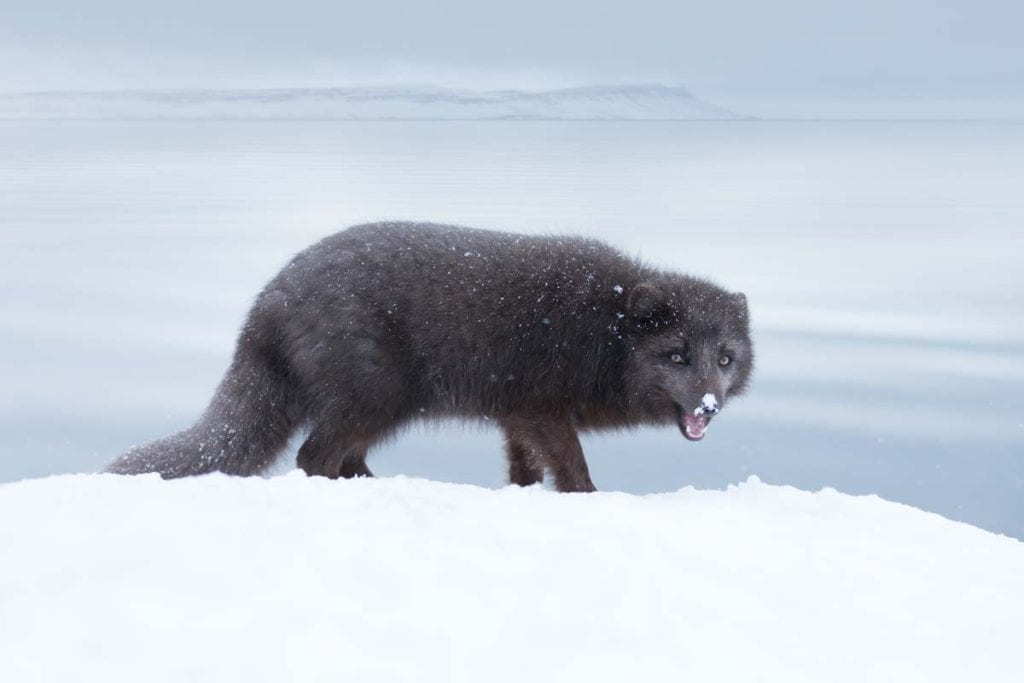
Desert Fox Colors
Desert foxes come in a few different shapes and sizes. Most foxes native to the desert are small in stature and come in different shades of cream and tan colors. Others are a peppered color similar to gray foxes.
A few desert foxes:
- Fennec fox
- Cape fox
- Culpeo fox
- Bat-eared fox
Fennec foxes can be a few different shades of tan, from orange to red shades of tan to a creamy almost white color. They usually have white underbellies and a black-tipped tail.
Bat-eared foxes are a mixture of tan, orange, peppered coloring, and black. They have huge ears that have some black, their legs are black, and they have some patches of black on their faces. Their bodies are a tan peppered color.
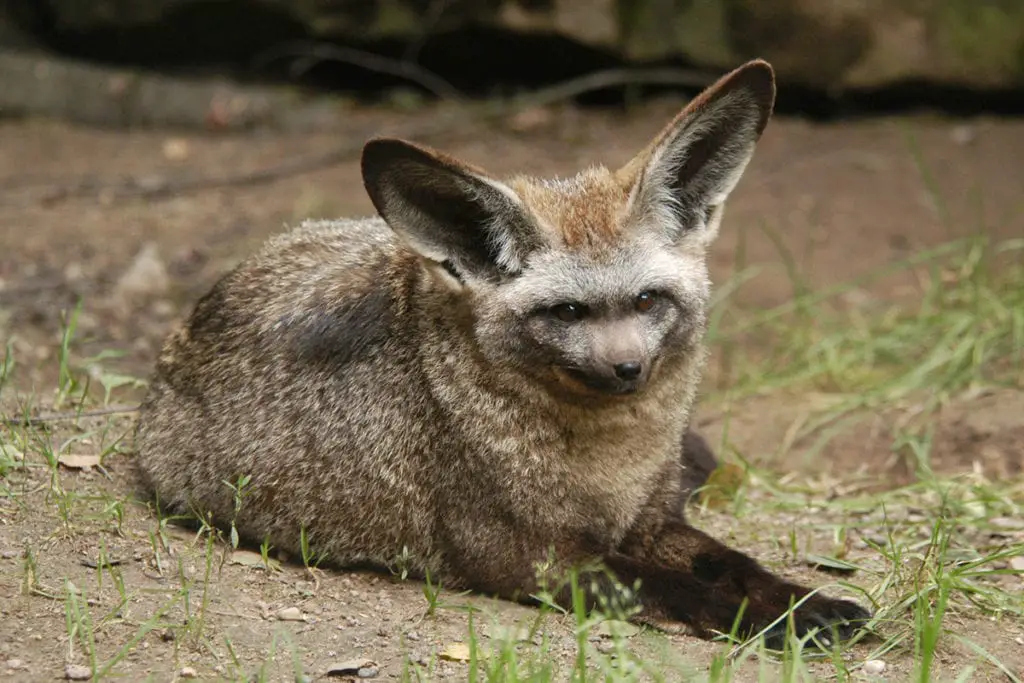
Gray Fox Colors
The common gray fox morph is a salt and pepper coloring, with some red and orange as well as black and white. They have some orange coloring around the heads and chest with a little bit of white. Their underbellies are usually white. Their bodies are a salt and pepper mixed color that is gray.
They have a black stripe on the back and tail and have black tips on their tails.
There are also a few other color morphs in gray foxes, one of them is white, and one is leucistic. The white morphs are completely white with pink noses, and the leucistic is a tan/beige color with some white areas on their chest and underbellies.
There are some melanistic gray fox color morphs, but these are very rare and little information can be found about them. These are all black with black noses.
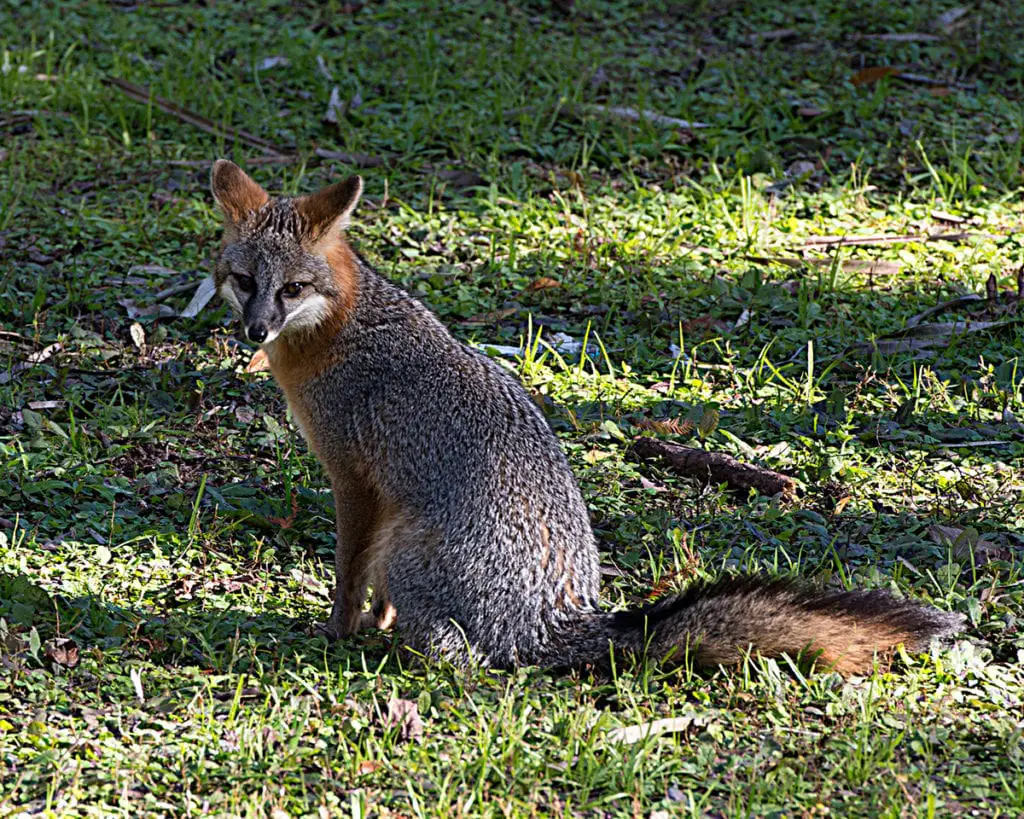
What is a Hybrid Fox?
A hybrid fox is a fox that has been crossbred with another species to create beautiful color variations. They are usually the result of breeding an arctic fox with a red fox. There are a lot of hybrid fox colors and breeds. These are man-made colors, due to breeding programs that came primarily from fur farms.
Some of the most common hybrids:
- Shadow red fox
- Blue frost fox
- Arctic marble fox
There are many variations in these hybrids, and there are more types that are made by combining traits from each.
Blue Frost Fox
The blue frost fox is made by crossing a silver fox with a blue arctic fox. These foxes closely resemble silver foxes with just a few differences in size. They have white-tipped tails and are slightly bigger than arctic foxes. Blue frost foxes have black noses and brown or yellow eyes.
The blue frost fox is also known as the indigo fox and the bluesilver fox.
Hybrid foxes are beautiful creatures but many of them have health problems and high mortality rates.
Fur Farms
Fur farms are responsible for many of the hybrid foxes that are out there. They have been crossing breeds to create different pelt colors for a hundred years. The fur of foxes has been considered valuable for a long time, for clothing and trade.
Silver fox fur was traded by Native Americans and considered a rare commodity. They were also worn by Russian aristocrats as a sign of wealth. The fur industry will most likely always exist, as fur has always been sought after.
Sadly, even in the modern-day era people still seem to be infatuated with having real fur despite a lot of people frowning upon it. It’s one thing to wear fur to survive and another thing to wear it for fashion.
Thousands of breeders breed foxes just for their fur and in some cases, the foxes live in terrible living conditions. Some breeders will breed their foxes to be bigger than normal causing health problems so that they will have bigger pelts that are worth more on the market.
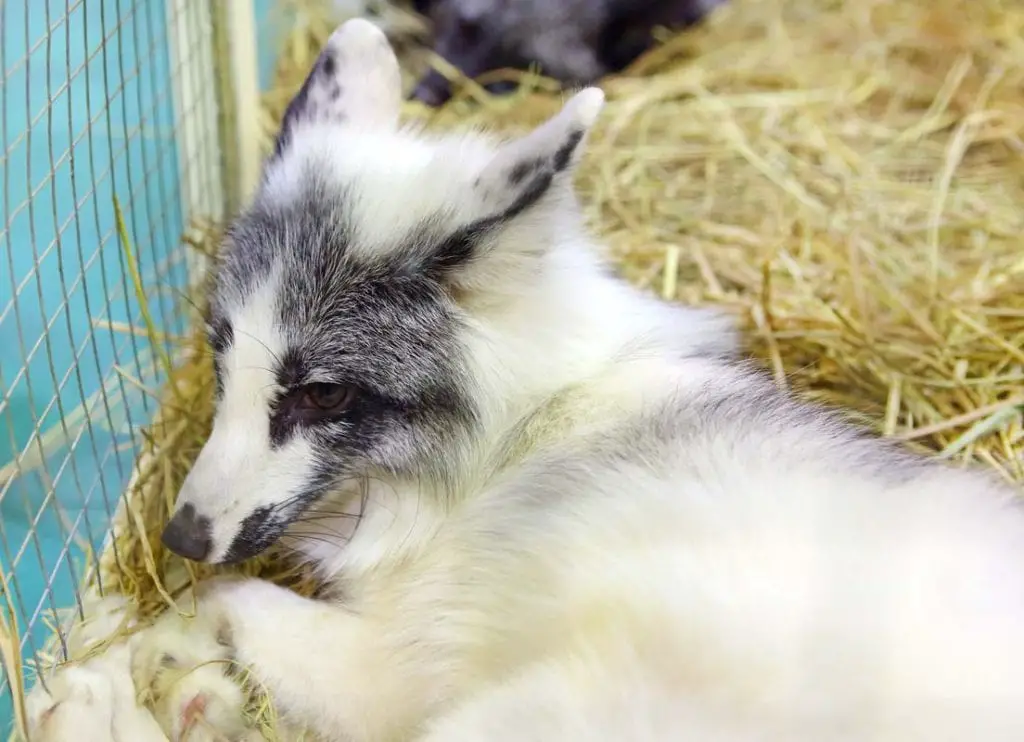
Pet Fox Breeders
Some breeders breed pet foxes. Pet foxes are legal as pets in some states and townships and illegal in others. There are many good breeders, but there are also some that keep their foxes in terrible conditions such as small cages and compartments.
A good breeder has large enclosures for their foxes, they feed them well and they love and care for them. They breed all kinds of foxes such as red foxes, arctic foxes, gray foxes, fennec foxes, and hybrid foxes.
Most of the hybrid foxes were originally bred by fur farms and were later introduced to the pet fox market for breeders.
Albino Foxes
Albino foxes exist in nature. They lack melanin and appear with white coats, pink noses, and pink ears. Albino foxes have pale eyes and are a rare fox with a genetic mutation found in many creatures. It is thought that this mutation in foxes is caused by a lack of nutrition and food supply.
Not all white foxes are albino, there are many color morphs in species such as arctic foxes and red foxes that have white morphs.
Unusual Color Morphs
Some foxes have unusual color morphs. There are red foxes that have been reported to have large white patches, or patches of orange and red around their eyes much like dogs. This is known as piebald. It is found in many animals and species. It causes unusual white spotting patterns. (Source)
Some foxes will have unusual colors when they are shedding, this is due to them losing some of their guard hairs which make them appear to be a blended color. There are red foxes that have a salt and pepper coloration that is similar to gray foxes.
This can make it hard to tell sometimes what species they are, however, the shapes of their body and faces can usually be enough to tell the difference.
Gray foxes have a black-tipped tail which makes them easier to tell apart from red foxes who have white-tipped tails.

Check out our PAWSOME new collection of Fox Gifts
Conclusion
Foxes are stunningly beautiful creatures. They come in many shapes, sizes, and unique colors. Fox colors vary depending on many factors, and with hybrid foxes, there are many more options in coloration.
There are a lot of good groups on Facebook and on the internet that are dedicated to identifying foxes through their coloration and shapes. If you have any questions about coloration or identification you may consider joining a group online.
Citations
Cross fox: https://www.nps.gov/articles/red-fox.htm
Red fox: https://nature.mdc.mo.gov/discover-nature/field-guide/red-fox
Arctic fox: https://www.ncbi.nlm.nih.gov/pubmed/15982782

